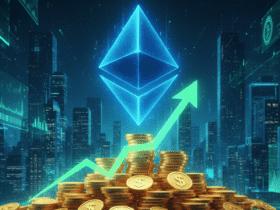Since last week, the roads of Rabat, the capital of Morocco, have been unusually pacified. This is because at the beginning of the evening, the City Center Gainz turns into an area for demonstrations led by an anonymous group known as 212.
General Z’s name indicates the age of protesters, mostly in its adolescence or twenty -seventh condition, and the number 212 is Moroccan’s dialing prefix.
The protests started small on September 27, but gradually increased to include the neighborhood of the working class in the rabat. It spread to Morocco’s largest cities, including Casablanca and Agadir, and then even in small cities.
Recently, they have become violent. The Morocco’s internal ministry reported that as a result of violence earlier this week, more than 400 people were arrested, 263 security officers were injured, and their 142 vehicles were damaged. The ministry said that another 20 private relatives were very damaged and 23 citizens were injured.
Morocco’s state news agency reported that two people died on 1 October on 1 October, when the police opened fire to protesters in the southern city of LQLIAA, allegedly in self -defense, Moroccan’s state news agency said.
How did the protest begin?
Group Genz 212 first called a month ago to protest a month ago, on its epinem server on the social platform discord. This called young people to protest on 27 and 28 September, demanding better health services and their right to education, and to explain what has been done as wrong political priorities.
A large amount of public funds have been used at the football stadium in Morocco, which will be used for various tournaments, including the 2026 Africa Cup of Nations in December and the FIFA World Cup in 2030.
In mid-September, around the time when the original Genz 212 group established its discord server, rights groups and locals staged a protest in front of a regional hospital in Agadir following the deaths of eight-less pregnant-less suspected circumstances of many people.
It was first that it would be called to display the call of Genz 212. But small performances took place on 27 September, and then continued to grow. The group then decided to organize the daily protest. This has occurred as a result of some of the largest anti -government protests in Morocco over the years.
The age of Morocco is around 30% of the entire population between 15 and 34. Although Jenz 212 has not made a huge demand for jobs, the General Z Age Group has been overwriting in unemployed data, with about 37% of the people of Morocco are 15 to 24 years of age, who are currently without jobs. In cities, the unemployment rate for this age group goes up to about 48%.
On Tuesday, October 1, the protests became violent for the first time, the protesters saw Morocco’s security services, setting cars and shops on fire, breaking windows and throwing rocks.
Who are Genz 212?
The group “purely a product of the Internet,” Morocco’s political analyst Raiid Belghiti told DW Arabic. “It has no traditional organizational structure, and no known leadership.”
It differs from the previous anti-government protests in Morocco, Belghiti, including the so-called movement on February 20, a popular protest movement in which a part of the 2011 Arab jumping demonstrations. In 2011, the breakout of those protests led to declare a reference to King Mohammed VI of Morocco Mohammed VI on a new constitution.
“There was a primary political demand in the 20 February movement: improvement of state structures, a complete separation of powers, and the establishment of a Parliament that would exercise real powers,” Belghiti explained. “Where the current demands of the General Z movement are more common and is characterized by a type of political romanticism.”
How has the Morocco government responded?
First of all, the government -related media outlets did not pay the youth protest. Some officials uploaded messages on Facebook or YouTube, in which they defended the government, criticized the protesters – suggestions from equipment that were conducted by the protests “foreign actors” – or enhanced restraint.
However, since then, the official statements have become very consensual.
On Tuesday, September 30, the government issued a statement: “After reviewing various developments related to young manifestations in electronic and public places, the government emphasizes that it is listening and the thesis understands social demands,” the statement states that the path ahead should be based on dialogue.
The statement said that the government was aware of the problem with the local health system, and that it is working on other reforms that would empower the local.
Fatima-Zahra Mansouri, Housing Minister of Morocco and Mayor of Markesh described the protest as “democratic vitality”.
“We are not afraid of our youth,” he said in a meeting earlier this week. “It is valid to protest, but we want it to remain with the law so that the dialogue is possible.”
During a live broadcast from the Inside Parliament, Amin Tehrai, the Health Minister of Morocco, accepted the old shortage within the national health system. He had earlier dismissed the director of Agadir Hospital, which was the subject of the first protest in September.
Opposition parties have said that the government should respond to the demands of the protesters. Some members of the opposition parties also suggested that the government should step on.
A notable absence among the official sources responding to the protests is the country’s billionaire Prime Minister Aziz Akhanuch. As a result, Akhanuch has been a matter of great ridicule and criticism on social media platforms.
On social media, King Mohammad VI of Moroccan is considered in front of the government’s disability to intervene.
Morocco has been elected Parliament and is a constitutional monarchy. But in fact, it is the king, who has now been on the throne for more than 22 years, which eliminates most political and economic power.
Genz 212 activists insisted that they were not targeting this system. “Our problem is not beyond the present government and its policies,” made a statement. “Do not confuse the criticism of the situation with nation’s rejection.”
What next?
Morocco analyst Belghiti believes that the authorities will continue to use security forces to ensure that they do not lose control over protests. “This is an easy answer, a one that preserves the current position and its policies,” he explained.
However, he said that they would not change the things that the youth were protesting in the first place. In Morocco, education and health sectors are plagued with considerable structural problems, issues that cannot be resolved quickly, and those who cannot even care to resolve profit-conscious politicians, argued.
Whether youth-driven protest should be released, or even grow up, it is possible that Prime Minister Ahanouch can be pushed out of power, Belghiti Sugart.
For now, the situation is still development, the analyst warned.
In fact, the other expert contacted by DW said that there is not yet enough information available to make an informed prediction, especially there are loud calls of bees for resting and decalation.
This story was the origin published in Arabic.






Leave a Reply